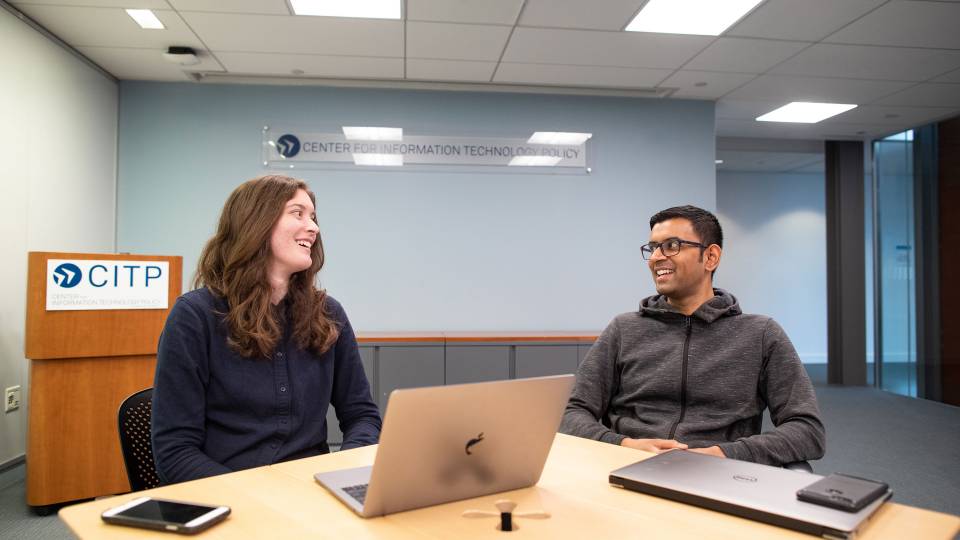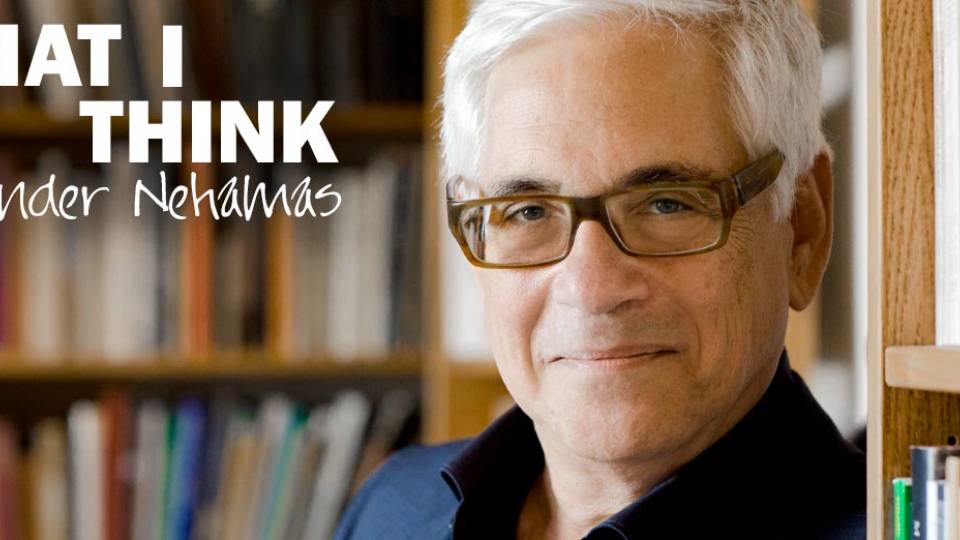From the April 9, 2007, Princeton Weekly Bulletin
Bernard Chazelle is asking his eight freshmen whether they know who Kevin Mitnick is.
Since the students were born well after the convicted hacker broke into his first computer system, Chazelle gives them some background.
The genius of Mitnick — now a computer security consultant — was that he was a social engineer who knew how to use technology to exploit the psychological Achilles' heels of others, says Chazelle, a professor of computer science.
"Social engineering is much more effective than mere hacking," he tells the students, most of whom are interested more in the humanities and social sciences at this point in their academic careers.
The confluence between social forces and computing is a strong undercurrent in Chazelle's class, a Richard L. Smith '70 Freshman Seminar titled "What Do Your DNA and Your iPod Have in Common?" The premise of the class is that computing comes in different shapes and sizes and that DNA and iPods are different implementations of exactly the same principle. "What makes DNA and iPods amazing widgets is that both are universal computers," Chazelle says.

In this class, the DNA enters the conversation later. For now, the class is discussing, if not exactly iPods, something closely related — the Internet and the worms, viruses, zombies, botnets and other species that can infect it. Inevitably the conversation turns to spam.
A student questions whether anyone ever responds to spam.
"Look, they wouldn't send it if it didn't work," says Chazelle. "Spammers are evil but they are not stupid."
Chazelle, a computer science theorist, segues into a technique called spoofing. "Spoofing is very scary because it enables someone to impersonate someone else," he says. "It is a concept that people have not paid enough attention to."
He discusses phishing, spam that tries to lure financial information from recipients by posing as trusted entities, such as banks, but directing them to spoofing sites, often at obscure Web addresses in foreign countries. He displays a slide of an e-mail that is putatively from a U.S. bank and asks what is suspicious about the message. At first the students are silent.
"If you were Kevin Mitnick, you would have spotted it right away," he goads playfully.
"Good thing we're not Kevin Mitnick," quips student Jac Mullen.
"Give us a hint," a classmate implores.
Chazelle tells the students to look at the address bar in the e-mail. "Cyrillic," exclaims Mauricio Lanio. "It's Russian!"
After a break, Chazelle displays the class blog. Since the seminar is a writing course, students are required to contribute "concise, pithy, thought-provoking posts." Earlier in the day, Alex Satty posted a short essay on viruses that insinuate themselves on a computer by pretending to be something else and referred to an episode of the television show "NUMB3RS" where this happens. Classmate Virginia Byron responded in a post that she was thinking of the same episode of "NUMB3RS" during the previous class.
The current conversation then turns to DNA. Chazelle talks about an experiment in which DNA was used to compute a classically difficult puzzle known as the traveling salesman problem, which requires calculating the shortest route to visit a collection of cities and return to the starting point.
In about 20 minutes of Socratic dialogue, Chazelle and the students sort out how it is that pure DNA can encode a seven-city traveling salesman tour and come up with the right answer.
Chazelle and the students also ponder the potential of DNA to power tiny nanoscale factories and computers, but as class ends, they have not precisely addressed the question of how their iPods are connected to their DNA. The conversation will continue, however, throughout the semester, in class and on the blog.


